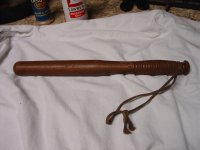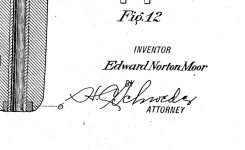DWalt
Member
It seems to me that the device was held onto the barrel by the front sight, somewhat like the socket bayonets of Civil War rifled muskets were retained by the front sight of the barrel. I would think that it had to be made to fit specifically either Colt or S&W revolvers and they were not likely to have the same barrel OD. In 1919, I believe there were considerably more Colts than S&Ws in police service.



